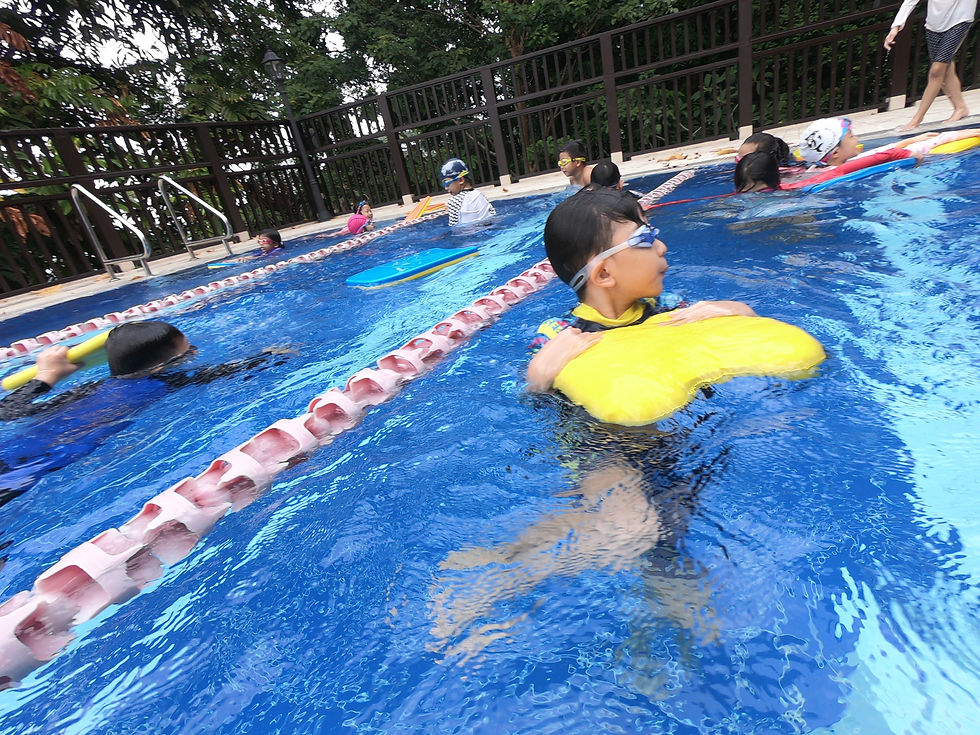Open Water Swimming in the Ocean: What to Know Before You Go
- SG Sink Or Swim

- Apr 17
- 3 min read

Open water swimming in the ocean is an exhilarating and rewarding experience. From the sense of freedom to the beauty of the natural environment, ocean swims offer challenges and thrills that pool swimming simply can’t match. But before diving into saltwater adventures, it’s essential to understand the unique conditions, safety precautions, and preparation strategies that come with swimming in the sea.
Whether you're a beginner training for your first open water event or a seasoned swimmer looking to explore new waters, this guide covers everything you need to know before swimming in the ocean.
🌊 Why Ocean Swimming Is Different from Pool or Lake Swimming
Swimming in the ocean introduces variables that aren’t found in pools or even lakes, including:
Saltwater buoyancy (makes floating easier)
Waves and surf (can impact rhythm and visibility)
Currents and tides (may push you off course)
Marine life and terrain (jellyfish, seaweed, rocky bottoms)
No walls to push off or rest on
✅ Understanding these differences is key to staying safe and swimming efficiently.
🧠 Things to Know Before Swimming in the Ocean
1. Understand the Tides and Currents
Ocean tides change throughout the day, and currents can be strong, invisible, and dangerous if you're unprepared.
Learn about rip currents – fast-moving channels of water that can pull swimmers away from shore.
Check tide charts and local surf forecasts before you swim.
Swim parallel to shore if caught in a rip current until you’re free, then swim back to land.
2. Know Your Entry and Exit Points
Before getting in the water:
Identify your start and exit landmarks (like a building or rock formation).
Look for obstacles such as rocks, coral, or fishing lines.
Plan your swim route and let someone know where you're going.
3. Wear the Right Gear
You’ll need more than just goggles in the ocean:
Bright swim cap – makes you visible to lifeguards, boats, and others.
Wetsuit (optional) – provides buoyancy and warmth in cooler water.
Anti-chafing balm – for long-distance swims in saltwater.
Swim buoy or tow float – adds visibility and can provide support in emergencies.
4. Acclimate to Saltwater and Temperature
Ocean water is colder and denser than pool water, which can cause shock or discomfort if you’re not used to it.
Start slow – enter gradually to let your body adjust.
Practice breathing calmly even in cold water or wavy conditions.
Train in similar conditions to your race or swim environment if possible.
5. Practice Sighting Techniques
Waves and chop can make it hard to swim straight.
Lift your head slightly forward every few strokes to sight landmarks.
Use buildings, buoys, or coastal features as targets.
Combine sighting with breathing to avoid disrupting your stroke too much.
6. Swim with a Buddy or Group
Ocean swimming should never be done alone.
Join a local open water swim group or train with a partner.
Keep visual contact with your buddy and agree on a route.
If swimming solo is unavoidable, have a spotter onshore watching you.
7. Respect Wildlife and the Environment
Don’t touch or disturb marine life.
Swim above coral and sea plants — don’t stand or drag your feet.
Avoid areas where jellyfish or stingrays are common unless trained to handle them.
🏊♂️ Tips for a Successful Ocean Swim
✅ Stay relaxed in waves – don’t fight the ocean, work with the rhythm
✅ Use bilateral breathing – helps with sighting and balance
✅ Hydrate beforehand – saltwater can dehydrate you faster than you realize
✅ Warm up on land – get your heart rate up before entering the water
✅ Train your mind – ocean swimming can be mentally challenging, so build your confidence through repetition and positive self-talk
🧭 Ocean Swim Safety Checklist
Before your swim, ask yourself:
Have I checked the tide and surf report?
Do I know my entry and exit points?
Am I swimming with a partner or group?
Am I visible with a bright cap or swim buoy?
Have I told someone when I’ll be back?
Do I feel confident about the route and water conditions?
🏁 Final Thoughts
Ocean swimming is a thrilling way to push your physical and mental boundaries while connecting with nature. But preparation is key. By understanding the environmental factors, safety precautions, and essential techniques, you’ll not only swim stronger — you’ll swim smarter.
With the right mindset and preparation, the ocean becomes less intimidating and more inviting. So suit up, stay safe, and embrace the open water adventure!





Comentarios